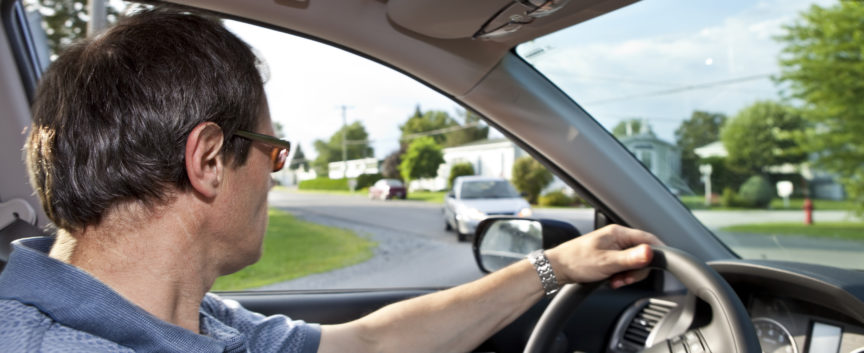The formula for defensive driving is see the hazard, understand the defense, and act in time. All drivers must apply this formula to prevent accidents in spite of the actions of other drivers or the presence of adverse driving conditions. A defensive driver must be able to accurately predict the outcome of traffic situations in order to apply the defense in time to prevent an accident.
Let’s take a closer look at the standard accident prevention formula and how it can be applied to everyday driving situations.
See the hazard—Think about what may happen as far ahead of reaching a situation as possible. Never assume that a condition will have passed before you approach it.
What are some of the hazardous conditions that you should look for?
You see an approaching vehicle starting a pass. It looks like he will complete the pass in plenty of time, but you are not really sure. Think about your defense.
You see a vehicle on the shoulder of the road—you can’t see the driver anywhere outside the vehicle. Will he open his door as soon as you approach his vehicle? What should you do?
You are traveling along a residential street. The vehicle approaching is a convertible with its top down. On the same side of the street you see a lawn sprinkler that is spraying water onto the roadway. What do you think the approaching vehicle will do?
These are only three simple conditions that could result in an accident. There are many more, so look beyond the vehicles ahead, and look for situations that may develop into an accident.—See the hazard.
Understand the defense—There are specific ways to handle most situations. We should review these situations in our mind so we can act quickly—in time to prevent an accident.
You probably thought about a defense for the situations we listed above. Let’s look at a few more situations and briefly review the defense.
You’re approaching an intersection on a wet slippery highway. The traffic light has been green for some time. You note vehicles waiting for the light to change at the intersection.
You can’t expect to come to a smooth even stop when traveling on a slippery highway. Since the traffic light has been green for some time, anticipate a change. Slow down gradually, well ahead of the intersection and apply your brakes carefully. Give yourself plenty of time.
You’re descending a hill and you start to pump your brakes and nothing happens—the pedal slaps the floor.
Don’t panic—try to downshift into a lower gear. Look for something to sideswipe—a snow bank, roadside brush, or a guardrail. Use your horn and flash your lights to warn others that your vehicle is out of control. Do whatever you can to prevent bodily injury. Vehicles can be replaced.
In an emergency situation, we should not panic. We must stay calm and apply the best defensive action. We must understand the defense.
Act in time—Once we see the hazard and decide upon a defense we must act immediately. Never assume that the condition will clear up. The sooner you act the more time you will have to avoid an accident.
Defensive driving does not come easy. We must constantly improve our skills of observation and coordination. We must go over situations in our minds and plan our defenses. Seeing the hazard, knowing the defense and acting in time will keep us all in the game.

